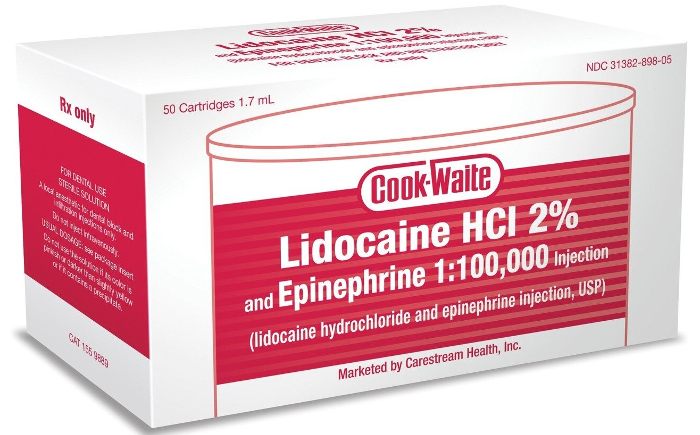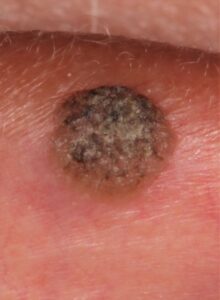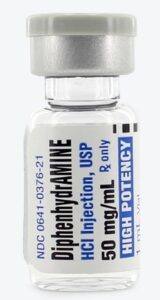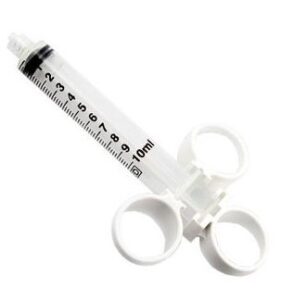
You CAN be allergic to the common dental local anesthetics
We are pleased to report that we are successfully treating patients who are allergic to the common local anesthetics used in dentistry. These types of allergies can frequently be called a number of terms such as “novocaine allergy” or “allergic to -caine local anesthetics” or “amide local anesthetic allergies.”
So how do we do it? We have provided dental treatment to multiple “novocaine allergic” patients using Benadryl (generic name Diphenhydramine) as a local anesthetic combined with IV sedation in our outpatient dental office. These patients normally would have needed to receive dental treatment in a hospital and have undergone full blown general anesthesia.
Read more to see how we’ve done this – and how we can help you.
Video of a “Novocaine Allergic” Receiving Dental Treatment
Yes, it is possible to receive dental care in an outpatient setting if you are either allergic or suffer severe adverse reactions to “regular” dental local anesthetics. Watch in this video as Stella talks about her adverse reactions and then see REAL FOOTAGE of us treating her using this technique:
You can view our entire page dedicated to this video here.
So, now that you’ve seen that we can do this, we can explore in more detail allergies/adverse reactions and how we can help you.
Allergies to Dental Local Anesthetics
A very small subset of the population exhibits either allergic or adverse reactions to “amide-family” local anesthetics (see references here, here and here). These include lidocaine, articaine, bupivicaine, and mepiviciane (among others). Allergic and/or adverse reactions can include localized swelling and redness at the injection site, increased heart rate/pounding in the chest, hives, lightheadedness, nausea, fainting, and other reactions, including anaphylaxis. Please note we have an excellent 3 part series on everything you need to know about allergies on our blog.

Lidocaine with epinephrine for dental use. It is possible to experience either allergic or adverse reactions when it is administered to you.
When this does occur, it is best to first talk to the dentist/physician who administered the local anesthetic. In most cases, he/she will ask that you be evaluated by an allergist. If the offending local anesthetic can be identified, sometimes an alternative -caine local anesthetic can be identified and then subsequently used. Other times, the patient exhibits a reaction to the alternative(s) and/or is too scared to undergo additional testing.
If you – the patient – are allergic to multiple local anesthetics – or are too scared to undergo additional testing (which is something we’ve seen repeatedly with the -caine allergic patients we’ve treated) – you have the following options.
Options if You are Allergic to Local Anesthetic(s)
Let’s say that you are diagnosed as having allergy(ies) or adverse reactions to the common local anesthetics. You really have four options:

What if you needed this cancerous mole removed? You need local anesthetic
- Avoiding dental and medical treatment all together. This is an option, although not recommended for obvious reasons. What if you have an abscessed molar tooth? What if you need a possible cancerous mole biopsied? You can only hold out for so long.
- Receiving treatment without local anesthesia. This can be done – and it all depends on your pain tolerance. A very small cavity could be filled this way. But what if you need an extraction? Or a root canal?
- General Anesthesia. In this scenario, you are typically brought into a hospital setting in which you are put to sleep. You are given medications that make you stop breathing and you are intubated. Dental treatment can then be done without local anesthetics. While this is feasible, there is always a risk with this level of general anesthesia. Furthermore, there may be limitations on which dental procedures can be completed in the O.R. For example, you may need a root canal, but the hospital is simply unable to provide that service in the O.R.
- Using Benadryl (diphenhydramine) as a local anesthetic with IV sedation. This option – practiced by very few dentists in the United States – will work – and is the approach that we practice here.
Benadryl (diphenhydramine) as a Local Anesthetic with IV Sedation

Diphenhydramine vial we use for local anesthetic.
Diphenhydramine – also known as the brand name Benadryl – has weak but demonstrated local anesthetic properties. If you search the internet, you can read about it being used successfully for minor dermatologic procedures (here and here). It is injected just like “novocaine” into the desired area – and then there is a temporary period of weak local anesthesia. The strength is typically sufficient for most superficial dermatologic procedures.
Dental procedures – which involve getting a tooth nerve numb – are completely different. A tooth nerve is encased in thick tooth structure, which is then embedded in your jawbone. Generally speaking, diphenhydramine by itself is rarely reliable enough to produce adequate local anesthesia for even simple dental procedures.
However, if Benadryl is combined with other medications, we can achieve profound local anesthesia – allowing patients with “-caine” allergies to receive dental treatment in an outpatient setting – and avoiding general anesthesia.
How We Treat “-Caine” Allergic Patients

We compound the custom Benadryl local anesthetic the morning of your arrival
Dr. Nick Calcaterra has spent countless hours researching and developing a very specific protocol for successfully treating patients using diphenhydramine as a local anesthetic along with IV sedation. Patients from all across New England and the tri-state area have traveled to be seen and treated by him.
We start with a thorough consultation (either in-person or virtual) in which your medical history is reviewed, the nature of your reaction(s) to local anesthetic(s) is/are established, and your dental needs are identified. Once agreed upon, we proceed as follows (please note that this is greatly summarized):
- Several days prior to your appointment, you start taking medications that Dr. Nick prescribes for you. These are not “sedative” medications. They basically “prime” your pain receptors to be slightly less sensitivity.
- You arrive and we start an IV. Just prior to your arrival, Dr. Nick compounds a diphenhydramine/epinephrine solution that will act as your local anesthetic.
- With the IV in place, but before we start, Dr. Nick administers additional non-sedative IV medications designed to further desensitize your pain receptors.
- Dr. Nick then administers sedation medications through the IV. The effects of those are trifold: first, you will become greatly relaxed and enter into a twilight state. Second, your ability to perceive pain will be diminished even further due to the administration of IV fentanyl. And lastly, you will begin to develop amnesia for the duration of the sedation.
- Once you are in this twilight state, Dr. Nick will administer the diphenhydramine/epinephrine solution as a local anesthetic – very similar to how he would administer a typical lidocaine injection.
- Within 5 minutes, you are numb. Dr. Nick is able to complete a number of different procedures – including crowns, fillings, root canals, and even extractions.
- You become alert – and learn that you are done – all with no pain and no allergic/adverse reactions!
Want to be Treated by Us?
Dr. Nick Calcaterra receives referrals from dentists and physicians throughout New England and the tri-state area for treating allergic patients under IV sedation. We would be happy to see you.
 If you are interested in setting up a consultation – either in person or a telehealth visit – we ask that you review our Frequently Asked Questions page first. We’ve compiled the most common questions so that you know more in advance of calling us or asking us to reach out to you. After you’ve reviewed this information, you can call us at (203) 799 – 2929 or visit this page to request an appointment.
If you are interested in setting up a consultation – either in person or a telehealth visit – we ask that you review our Frequently Asked Questions page first. We’ve compiled the most common questions so that you know more in advance of calling us or asking us to reach out to you. After you’ve reviewed this information, you can call us at (203) 799 – 2929 or visit this page to request an appointment.
